Mapping spatial organization and genetic cell-state regulators to target immune evasion in ovarian cancer
- PMID: 39179931
- PMCID: PMC11436371
- DOI: 10.1038/s41590-024-01943-5
Mapping spatial organization and genetic cell-state regulators to target immune evasion in ovarian cancer
Abstract
The drivers of immune evasion are not entirely clear, limiting the success of cancer immunotherapies. Here we applied single-cell spatial and perturbational transcriptomics to delineate immune evasion in high-grade serous tubo-ovarian cancer. To this end, we first mapped the spatial organization of high-grade serous tubo-ovarian cancer by profiling more than 2.5 million cells in situ in 130 tumors from 94 patients. This revealed a malignant cell state that reflects tumor genetics and is predictive of T cell and natural killer cell infiltration levels and response to immune checkpoint blockade. We then performed Perturb-seq screens and identified genetic perturbations-including knockout of PTPN1 and ACTR8-that trigger this malignant cell state. Finally, we show that these perturbations, as well as a PTPN1/PTPN2 inhibitor, sensitize ovarian cancer cells to T cell and natural killer cell cytotoxicity, as predicted. This study thus identifies ways to study and target immune evasion by linking genetic variation, cell-state regulators and spatial biology.
© 2024. The Author(s).
Conflict of interest statement
M.P.S. is a cofounder and scientific advisor of Personalis, SensOmics, Qbio, January AI, Fodsel, Filtricine, Protos, RTHM, Iollo, Marble Therapeutics and Mirvie. M.P.S. is a scientific advisor of Yuvan, Jupiter, Neuvivo, Swaza and Mitrix. M.C.B has outside interest in DEM Biopharma. The other authors declare no competing interests.
Figures
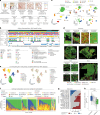
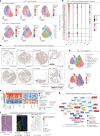
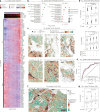



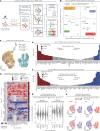

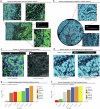



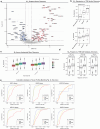

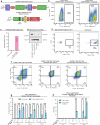

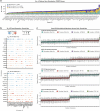

References
-
- Galon, J. & Bruni, D. Tumor immunology and tumor evolution: intertwined histories. Immunity52, 55–81 (2020). - PubMed
-
- Chen, D. S. & Mellman, I. Oncology meets immunology: the cancer–immunity cycle. Immunity39, 1–10 (2013). - PubMed
-
- Leach, D. R., Krummel, M. F. & Allison, J. P. Enhancement of antitumor immunity by CTLA-4 blockade. Science271, 1734–1736 (1996). - PubMed
-
- Chamoto, K., Yaguchi, T., Tajima, M. & Honjo, T. Insights from a 30-year journey: function, regulation and therapeutic modulation of PD1. Nat. Rev. Immunol.10.1038/s41577-023-00867-9 (2023). - PubMed
MeSH terms
Grants and funding
LinkOut - more resources
Full Text Sources
Medical
Research Materials
Miscellaneous

